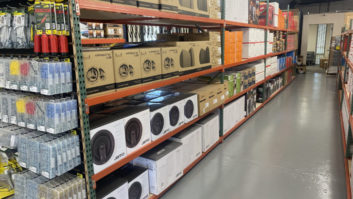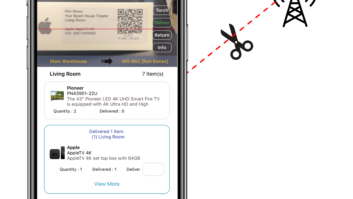As the CEO of a company that builds its brand and sells direct via the Internet and at retail across the globe, every day I think about more effective ways to reach out to and engage with potential customers online and off. Over the past several years, showrooming has gotten a lot of attention for being a threat to brick-and-mortar sales but I see the opposite and the Internet as an opportunity for growth.
While showrooming certainly exists, I’d like to introduce another way of thinking about the relationship between retail and the Internet. “Webrooming,” as some call it, is actually happening with much higher frequency and presents a much bigger market opportunity for retailers when compared with the negative consequences of the Internet. With webrooming, consumers are learning about products online and using that information to make an in-store purchase based on price, proximity or any other number of factors.
Depending on which analyst report or market data you’re looking at, roughly 90 percent of consumer electronics purchases begin on the Internet, yet just between 35 percent and 45 percent of CE purchases are consummated on the Internet. To me, these statistics portray an Internet that is an energizing tool for products and categories rather than a parasitic threat to our in-store sales. People’s aspirations are built researching CE products, and that research now takes place on the Internet, even if the purchase does not. “Buyer’s remorse” fears are eliminated before they ever step foot into a brick-and-mortar store. That’s powerful.
After 25-plus years in retail and more than three years on the front lines of one of the savviest web marketing CE brands, it’s become clear to me that consumers expect the ability to research and shop across multiple channels regardless of when they decide to make an actual purchase. Along the way, I’ve learned a few things that can help you embrace the practice of webrooming to make it work for you.
At SVS, I’ve surrounded myself with experienced graphic designers, web analytics specialists and creative talent who are equipped to build and drive an effective and accountable digital marketing program. CE brands that are invested in the Internet can be a tremendous asset for brick-and-mortar retailers, and I don’t just mean by helping them to sell direct (although that is a big plus). If vendor partners are not committed to building their own brands via the Internet, it’s unlikely they are helping retail partners much. This is admittedly a self-serving statement, but I implore you to surround yourself with partners who understand this new digital world and can help you unleash the potential.
Think about the places you like to shop online and the websites you like to visit, and then look at your own website and those of your partners. Does it provide an honest reflection of the in-store experience? Is it a resource for information on products you offer and expertise you provide? Is it full of validation, acclaim and the external sources that consumers look for? Maintaining a consistent experience across all channels is a constant effort but essential to capitalizing on webrooming because the Internet provides the first impression and is often the determining factor for where or how customers make a CE purchase.
Every time a customer walks into your store, visits your website or leaves a comment on your Facebook page, there’s an opportunity to collect data that can help you understand them better. If you’re going to have a website, mobile app, search engine marketing strategy and social-media presence, make sure you have the resources to monitor, measure and analyze feedback and results constantly to see what works and what doesn’t. The data you collect can be used to create a better customer experience and the opportunity to directly engage customers is a sure way to grow awareness across all channels.
To that end, all sales and marketing channels should be aligned and working towards a common goal of creating customers for life. Every touch point should be equally valued. For instance, it should never take three days to respond to a customer’s Facebook post or email. Would you ever leave a customer waiting three hours for an in-store demo? Have a process to answer inquiries immediately and provide outbound customer service whenever possible.
It’s also important to constantly pay attention to what’s out there. One negative posting or a one-star rating on Yelp or Google Local can be driving business to your competitor or making potential customers buy online instead. Be aware of your local listings and try to get as many customers talking as possible; the results of many experiences will outweigh a few and show your true experience. Combine that with a paid search program using product and geographic terms and your five-star rating will also show up at the top of search rankings for customers who are looking for the products and services you offer.
There’s no denying the importance of Internet research in the CE purchasing process. Webrooming data proves that we have more opportunities to reach, engage with and learn from our customers than ever before. From a marketing perspective, how brands and retailers respond to these opportunities will determine their future success.
Gary Yacoubian is president/CEO of SVS.












